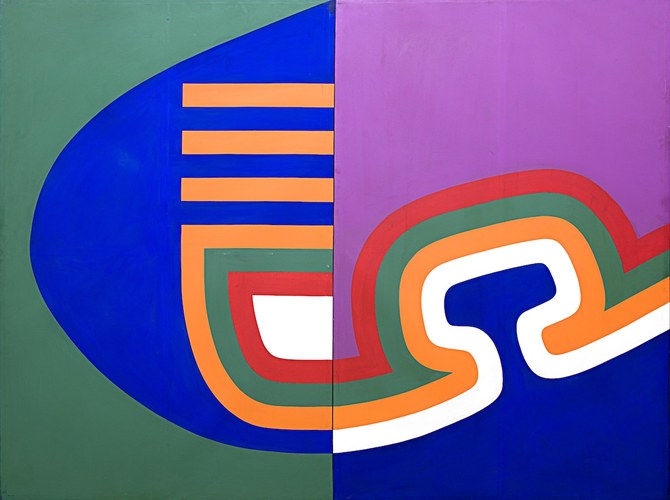
DUBAI: Between the 1960s and 1980s, post-independence Morocco witnessed the rise of a game-changing artistic movement known as the Casablanca Art School. It was spearheaded by a new generation of pioneering Moroccan artists and educators such as Farid Belkahia, Mohammed Chabaa and Mohamed Melehi, who sought to create a modern and vibrant visual language that paid tribute to their country’s multicultural heritage.
For the latest updates, follow us on Instagram @arabnews.lifestyle
The movement is the subject of an ongoing exhibition, until Jan. 14, at Tate St. Ives in Cornwall, England. A landmark show, it is the first time that a major British museum explores Moroccan modernism. Organized along with the Sharjah Art Foundation in the UAE, “The Casablanca Art School” show gathers an extensive selection of abstract works, sculptures and tapestries by 22 artists, accompanied by attractive displays of print archives, vintage journals, photographs and films.
“The Casablanca Art School always had something compelling to everybody, probably because of the visual efficiency in their work and the fact that the fusion of Western art and local tradition is kind of perfect in a way,” Morad Montazami, the show’s co-curator, told Arab News. “With the Casablanca Art School, there’s something about their work and trajectory that feels kind of resolved about ‘West’ and ‘East’ influences.”
One of the unique aspects of the school was how unconventional it was. “The anti-colonial position was about creating a new language, which should be based on local arts and crafts in terms of geometric creativity and materials that they used,” said Montazami. Artists went beyond the canvas and other traditional Western media in favor of copper, leather and animal skin. They were also inspired by Amazigh, Berber and African jewelry and carpets. A lot of paintings of this era implemented fluorescent colors through cellulosic, industrial paint that was commonly used by local workers in car garages and workshops.
Casablanca Art School artists also literally took to the streets with their art, turning the city into a public canvas. “It was a way to attract the viewer of the streets because they began showing in non-museum spaces and outdoor exhibitions,” said Montazami. “There weren’t really local galleries — only French-owned galleries exhibited Moroccan artists as naive or folk painters. There wasn’t even a modern art museum. So Casablanca as a postcolonial city was really transformed by these innovative artists.”












